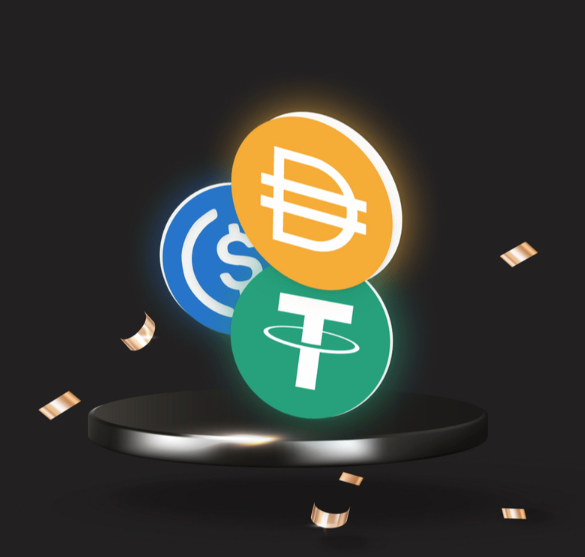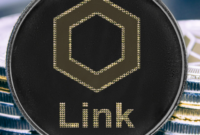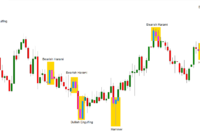bbc.towzdog.com – Best Stablecoins for Trading: A Complete Guide for Crypto Enthusiasts As the world of cryptocurrency grows, so does the popularity of stablecoins—digital assets that are pegged to stable traditional assets like fiat currencies or commodities. Stablecoins provide a valuable solution for traders who want to avoid the price volatility often associated with other cryptocurrencies like Bitcoin and Ethereum. They allow you to trade within the crypto ecosystem while minimizing risks related to sudden price swings. This article delves into the best stablecoins for trading, exploring what makes each one unique and why traders use them to secure profits or hedge against market fluctuations.
What Are Stablecoins, and Why Are They Important in Trading?
Stablecoins are digital assets pegged to stable assets, such as the U.S. Dollar (USD), Euro, or other commodities like gold. This pegging ensures that stablecoins maintain a consistent value, making them reliable for transactions, storing value, and—most importantly for traders—preserving gains during market volatility. The most common type of stablecoin is fiat-collateralized, where each coin is backed by a reserve in traditional currency, ensuring a 1:1 value peg.
Benefits of Using Stablecoins for Trading
Traders value stablecoins for several reasons:
- Hedge Against Volatility: When crypto markets experience drastic price swings, traders can move funds into stablecoins to secure profits without cashing out to fiat.
- Liquidity: Stablecoins are widely accepted across most exchanges, allowing for quick transitions between trades.
- Lower Transaction Costs: Most stablecoins offer lower transaction fees compared to traditional bank transfers, making them ideal for regular traders.
- Speed of Transactions: Moving between different assets is quicker within the crypto ecosystem, enabling rapid response to market changes.
In summary, stablecoins serve as a flexible and accessible medium of exchange, combining the reliability of fiat currencies with the speed and efficiency of blockchain transactions.
Top Stablecoins for Trading in 2024
With the increasing number of stablecoins available, choosing the best one for trading requires understanding the unique qualities each stablecoin offers. Here’s a look at some of the best stablecoins for trading, based on stability, liquidity, transparency, and adoption.
1. Tether (USDT)
Tether (USDT) is one of the first and most widely used stablecoins in the crypto market. Launched in 2014, USDT is pegged to the U.S. dollar on a 1:1 basis and remains a top choice for trading due to its high liquidity and extensive adoption across exchanges.
Why USDT is Popular Among Traders
- Liquidity: USDT has high daily trading volumes, meaning traders can easily move large amounts without affecting the market price.
- Wide Acceptance: Almost every major cryptocurrency exchange supports USDT, making it accessible for trading pairs with most cryptocurrencies.
- Stable Peg: Despite some controversies, Tether has maintained its peg to the U.S. dollar, providing consistent value for traders.
Many traders rely on Tether as a trusted means of storing value in the crypto market. However, Tether’s lack of transparency regarding reserve audits has raised some concerns in the past. Despite these issues, it remains a popular choice for high-volume traders.
2. USD Coin (USDC)
USD Coin (USDC) is a fiat-collateralized stablecoin managed by Circle and Coinbase. Like Tether, it is pegged to the U.S. dollar but offers greater transparency in its reserve audits, which are published regularly. This makes USDC a preferred choice among traders seeking a stablecoin with robust regulatory compliance.
Key Advantages of Trading with USDC
- Transparency and Regulation: USDC’s reserves are fully backed by U.S. dollar assets, and its monthly audits enhance trust.
- DeFi Integration: USDC is widely accepted in decentralized finance (DeFi) applications, making it a flexible option for trading and DeFi activities.
- Low Fees: Transacting with USDC is generally cost-effective, especially on networks with lower fees like the Solana and Algorand blockchains.
USDC has gained popularity in both centralized exchanges and DeFi platforms, providing traders with a reliable asset that offers security and consistent regulatory backing.
3. Binance USD (BUSD)
Binance USD (BUSD) is a stablecoin issued by Binance, one of the largest cryptocurrency exchanges, and is pegged to the U.S. dollar. BUSD is fully regulated by the New York State Department of Financial Services (NYDFS), which requires the company to maintain reserves equal to the amount of circulating BUSD tokens.
Benefits of Using BUSD for Trading
- Regulation and Transparency: BUSD’s reserves are audited monthly, providing transparency and regulatory assurance to users.
- Native to Binance Exchange: Traders on Binance can enjoy zero fees when trading certain pairs with BUSD, offering cost savings.
- Multi-Blockchain Compatibility: BUSD is available on multiple blockchains, including Ethereum and Binance Smart Chain, making it versatile for trading and DeFi use.
BUSD has become popular on Binance and other exchanges due to its regulatory backing, transparency, and native integration with the Binance ecosystem.
4. DAI
Unlike other fiat-backed stablecoins, DAI is a crypto-collateralized stablecoin managed by the MakerDAO platform. DAI is pegged to the U.S. dollar but backed by other cryptocurrencies, primarily Ethereum. It’s generated through smart contracts and offers a decentralized, trustless approach to stability, making it popular among traders in the DeFi sector.
Why DAI Stands Out in the DeFi Space
- Decentralized Model: DAI is created and maintained through a decentralized system, giving it added resilience in the DeFi ecosystem.
- Transparency: All DAI transactions are on the blockchain, allowing users to verify reserves and holdings.
- Flexibility in DeFi: DAI is widely accepted in DeFi applications and allows for easy trading on decentralized exchanges (DEXs).
DAI’s decentralized nature and acceptance in DeFi make it a unique option among stablecoins, particularly for traders who prefer a non-centralized asset.
5. TrueUSD (TUSD)
TrueUSD (TUSD) is another fiat-backed stablecoin pegged to the U.S. dollar. It offers a high level of transparency, with real-time verification of reserves through partnerships with third-party accounting firms. TUSD is gaining popularity among traders seeking stability and transparency.
Advantages of Trading with TUSD
- High Transparency: TUSD uses independent verification to ensure it is fully backed, providing users with confidence in its stability.
- Available on Major Exchanges: TUSD is supported on major exchanges, giving traders flexibility in asset management.
- Real-Time Audits: The real-time auditing approach is unique to TUSD, enabling traders to check reserve data anytime.
Although not as widely used as USDT or USDC, TUSD has earned a reputation as a stable, transparent, and reliable option for those who prioritize secure reserves.
How to Choose the Best Stablecoin for Your Trading Needs
Selecting the best stablecoin for trading depends on several factors:
- Liquidity: High liquidity ensures you can easily trade large amounts without affecting the market price. USDT and USDC are some of the most liquid stablecoins available.
- Transparency and Regulation: If regulatory compliance and reserve transparency are important, options like USDC and BUSD offer robust regulatory backing and regular audits.
- Decentralization: For traders interested in decentralized assets, DAI offers a unique, trustless approach that aligns well with DeFi trading.
- Transaction Fees: Some exchanges offer lower fees for trades involving native stablecoins, like BUSD on Binance. Evaluate fee structures on your chosen platforms to optimize costs.
Risks Associated with Stablecoin Trading
While stablecoins are known for their stability, they come with their own risks:
1. Centralization Risks
Many fiat-backed stablecoins are managed by central entities, introducing risks associated with the management of reserves. Users are dependent on these entities to maintain adequate backing for their stablecoins.
2. Regulatory Risks
Governments around the world are examining stablecoin regulation. Regulatory changes could impact the availability or structure of certain stablecoins, especially those that are centrally managed.
3. Algorithmic Stability
Algorithmic stablecoins are an emerging type, but their stability mechanisms can be complex and sometimes fail, as seen with TerraUSD (UST). While algorithmic stablecoins are innovative, they may not offer the same security as fiat-collateralized options.
For more insights on the best stablecoins for trading and their latest updates, check out CoinMarketCap’s stablecoin rankings to explore real-time data on top-performing stablecoins.




